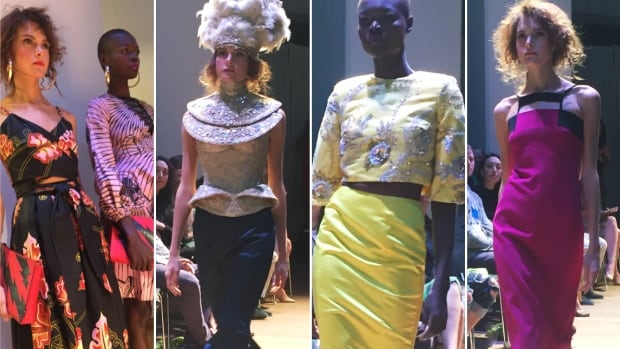When it comes to sustainable fashion, “if it’s tacky, people won’t buy it,” says Kelly Drennan, founder of the nonprofit Fashion Takes Action.
The group held a runway show in Toronto this week featuring sustainably made clothing.
While social concerns may lead designers and consumers to consider environmentally friendly and responsibly made clothing, “sustainable fashion should always put fashion first.” says Drennan.
The “Fashion Takes Action” show aimed to challenge negative stereotypes about eco-fashion, which often evokes images of hippies and notions of poor quality.
The event featured 10 Canadian labels that incorporate ethical practices and designs that range from high-end haute couture ball gowns to recycled cotton dresses.
A woman models a Julia Yeh outfit at the Fashion Take Action sustainable fashion show in Toronto on Thursday. (Anusila Shaw)
But can sustainable fashion really go mainstream? It’s one thing if independent designers embrace the concept, but another thing if big chains and consumers follow suit.
What is sustainable fashion? Fashion Takes Action Criteria
Made locally. fair trade. Use of organic, sustainable or recycled fabrics. Upcycle or reuse. Natural, non-toxic dye. Zero waste. Slow fashion (clothes made of high quality rather than mass produced).
“Eventually, I believe that sustainable fashion has to go mainstream,” says John, who oversees the Canadian fashion industry and currently holds a Ph.D. in environmental science with a special focus on sustainable fashion at Ryerson University. said Annika Kozlowski, who is currently acquiring the.
“Consumers are aware of sweatshop labor, poor working conditions, and larger environmental issues such as water pollution and chemicals used to grow cotton. That is the biggest issue right now.


